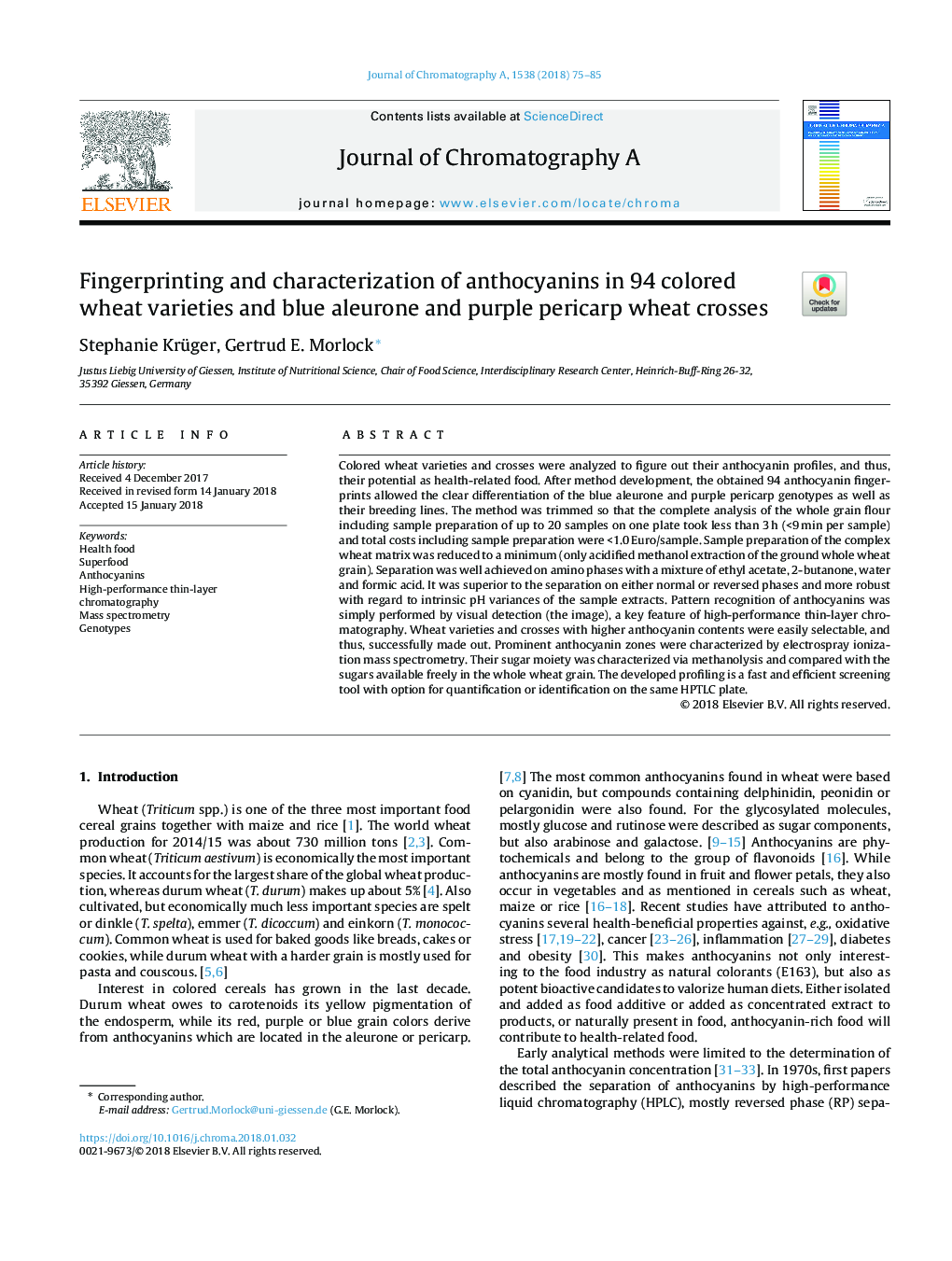| Article ID | Journal | Published Year | Pages | File Type |
|---|---|---|---|---|
| 7608788 | Journal of Chromatography A | 2018 | 11 Pages |
Abstract
Colored wheat varieties and crosses were analyzed to figure out their anthocyanin profiles, and thus, their potential as health-related food. After method development, the obtained 94 anthocyanin fingerprints allowed the clear differentiation of the blue aleurone and purple pericarp genotypes as well as their breeding lines. The method was trimmed so that the complete analysis of the whole grain flour including sample preparation of up to 20 samples on one plate took less than 3â¯h (<9â¯min per sample) and total costs including sample preparation were <1.0â¯Euro/sample. Sample preparation of the complex wheat matrix was reduced to a minimum (only acidified methanol extraction of the ground whole wheat grain). Separation was well achieved on amino phases with a mixture of ethyl acetate, 2-butanone, water and formic acid. It was superior to the separation on either normal or reversed phases and more robust with regard to intrinsic pH variances of the sample extracts. Pattern recognition of anthocyanins was simply performed by visual detection (the image), a key feature of high-performance thin-layer chromatography. Wheat varieties and crosses with higher anthocyanin contents were easily selectable, and thus, successfully made out. Prominent anthocyanin zones were characterized by electrospray ionization mass spectrometry. Their sugar moiety was characterized via methanolysis and compared with the sugars available freely in the whole wheat grain. The developed profiling is a fast and efficient screening tool with option for quantification or identification on the same HPTLC plate.
Keywords
Related Topics
Physical Sciences and Engineering
Chemistry
Analytical Chemistry
Authors
Stephanie Krüger, Gertrud E. Morlock,
